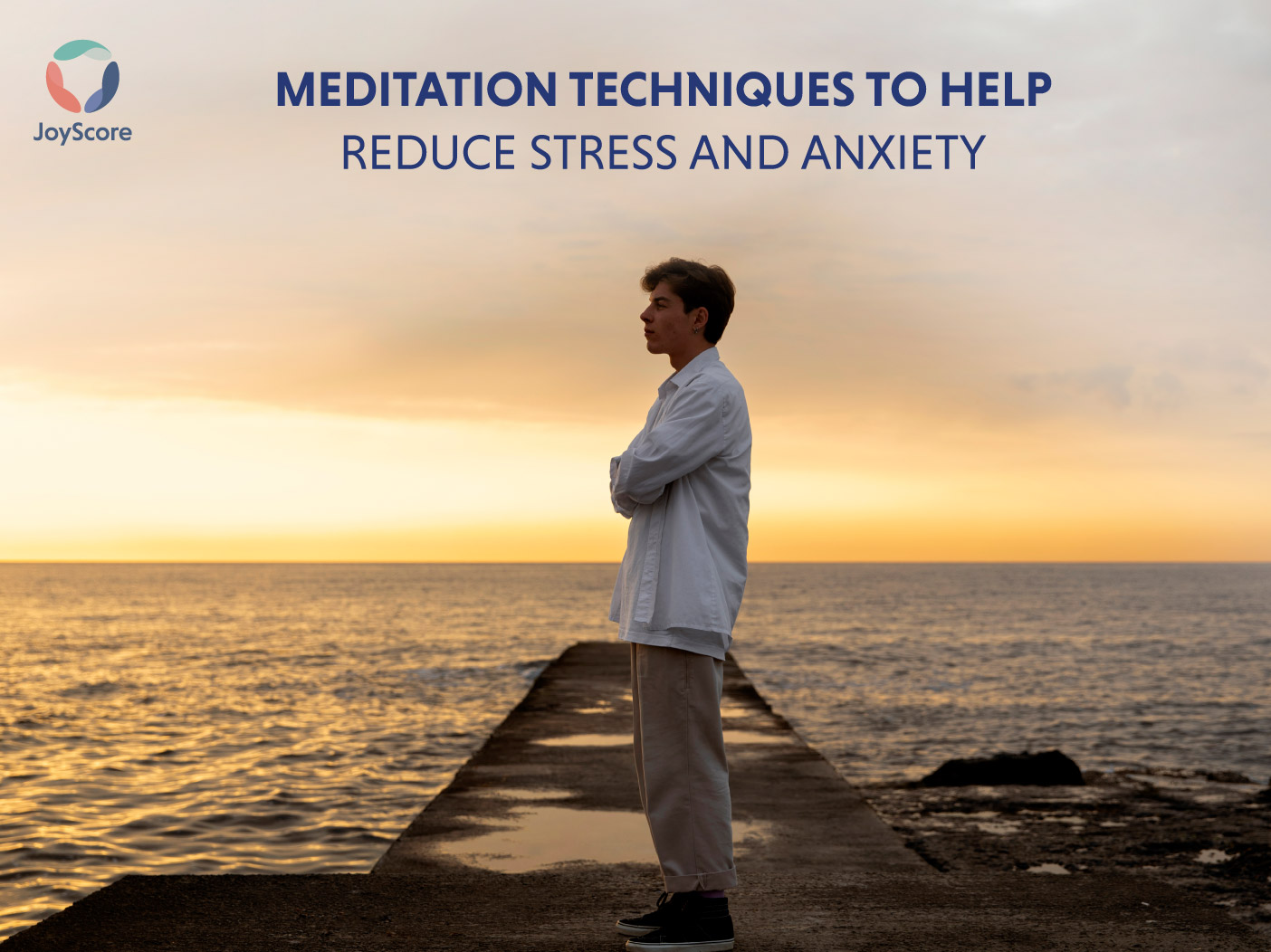Meditation is a simple technique which teaches us how to practice patience. It may seem easy but it’s actually a tricky job. A well-known meditation teacher, Sharon Salzberg, said the first meditation experience she participated in taught her how quickly one’s mind gets caught up in worldly affairs. However, with consistent practice, meditation imparts the most important tools: patience and compassion.
To practice, one just needs to find a relaxing place and set a timer to start.
- Before starting, think positive thoughts to fill your mind with joy and gratitude.
- Whether sitting on a chair or crossed leg on the floor, bring your attention to your body parts and see how they feel.
- Now bring your focus to your breath as it goes in and out.
- Even if your mind wanders after every few seconds, simply bring back the attention to your breath without judging yourself.
- Notice your body sensations. Notice your thoughts and feelings.
- Do not fight with your thoughts if they are restless. Give them time and let thoughts pass by.
- Feel the bliss in your heart and end the session as your breath becomes calm and still.
HOW MEDITATION HELPS ANXIETY AND STRESS
Almost all meditation techniques are beneficial in reducing stress and controlling anxiety symptoms. This is because, when we start meditating on a regular basis:
- It helps to clear away the information overload that builds up every day and leads to stress.
- It gives you a new way of thinking about situations and people, eventually reducing stress.
- It produces a state of relaxation in the body and mind.
- It distracts your attention from stressful situations and gives you the ability to avoid becoming overwhelmed.
- It sends helpful signals to the brain and stimulates release of happy hormones.
DIFFERENT MEDITATION TECHNIQUES
Experienced meditators agree that there is not one meditation technique that is the best. It’s different for all individuals. After all, there are literally hundreds of different meditation techniques based on different traditions, cultures, religions and beliefs. Here is a list of some of the most well known forms:
- MEDITATION TECHNIQUES FOR BEGINNERS
- GUIDED MEDITATION
This is an excellent choice for a keen beginner as it provides a focal point and gentle instructions to help one let go of self-judgment. Here, the voice one hears in the beginning of the session is serious, yet calm and soothing, speaking at a comfortable speed.
- BREATHING MEDITATION
This is a basic but very powerful form of meditation. The idea of this practice is to focus on your breathing rhythm and flow during each inhale and exhale. When one starts to feel overwhelmed, this practice will help them quickly rein in stress. There are a number of breathing patterns which one can follow during this meditation technique too.
- BODY SCAN MEDITATION
As the name suggests, this meditation technique involves scanning your body for any inappropriate sensations like pain or tension. A 30-40 minutes time period is recommended to investigate the entire body thoroughly but if you are short on time, utilize whatever time you have. This technique will help you to become more aware of your physical sensations and feelings pertaining to stress. Thus, one can respond with more patience next time they experience emotional distress.
- LOVING-KINDNESS MEDITATION
Loving-kindness meditation is also known as Metta meditation. This helps to cultivate feelings of compassion, kindness and gratitude towards oneself and others. It involves mentally sending goodwill and warmth to others by silently repeating some mantras. The words or mantras one uses are: May I/we be healthy, May I/we be safe, May I/we be happy. During the session, you focus your attention on your heart and can also place a hand there. As you get more comfortable with this practice, you can also direct the meditation towards difficult people in your life.
- VISUALIZATION MEDITATION
This is a meditation technique which helps to re-program your senses by means of a mental image or scenario. You can visualize anything, an image of something or someone, that is conjured as the object of focus. You can also use compassion as a tool wherein, you focus on a person you have in mind and direct kindness towards them. One study also proved that people who visualized their workouts increased their muscle strength. To conclude, visualization meditation helps:
- Improve performance
- Boost confidence
- Increase focus
- Decrease stress and anxiety
- Decrease depression
- WALKING MEDITATION
You don’t have to sit down to meditate during this technique. Hence, it is more accessible to beginners since not all of us are not used to sitting still for a long period of time. In this practice, bring your attention towards your feet, body and the ground below you and focus on how you feel while walking. After the meditation session, you will see an improvement in your cognitive abilities as you train your mind to stay present, attentive and focused as you walk.
- MINI MEDITATIONS
These are one minute meditation sessions for those who are short of time but need a calmer state of mind instantly. These can be practiced anywhere, sitting in an office chair, in a parked car, or outside. Just close your eyes and focus on your breath for one minute. This gives an immediate cognitive connection and restores peace.
- TRANSCENDENTAL MEDITATION
This is the meditation technique which offers an accessible approach to the depth of meditation. However, the best way to learn it is through a trained practitioner. When the practitioner silently repeats a TM mantra, it serves as a vehicle transporting the mind from an active to a quiet state. The mantras chosen have the ability to lead the mind inwards and are universal. They are not bound by any language, culture or religion but create a rhythmic pattern which is soothing and unobtrusive. The two most widely used mantras are “OM” and “SHANTI”. The ultimate result is stress relief, deeper self awareness and a more profound spiritual experience.
- VIPASSANA MEDITATION
Practicing vipassana meditation helps you to acknowledge your thoughts and feelings without judgment. You become an observer of your mind but don’t get too caught up in what you find. Unlike other meditation forms, this is all about developing deep insight into the nature of reality. Your focus is not breath, movement or a mantra but your own thoughts. It’s important to note, there are some rules in vipassana meditation for maximum self reflection, such as:
- Maintain silence
- Avoid alcohol and drugs
- Do not eat after midday
- Avoid sensual entertainment
- QUIGONG
This is an ancient Chinese healing practice that combines meditation, gentle movement and controlled breathing altogether. It is popular and widely used for being a form of exercise, recreation, relaxation, and preventive medicine for your physical and mental healing. The two categories of quigong are active and passive. Active form involves energy, strength and vibrancy whereas passive is a combination of passive energy, calmness and gentleness.
- CHAKRA MEDITATION
This is one of the most powerful and ancient meditation techniques; it is used widely for its enormous mental and physical health benefits. Despite having hundreds of chakras, the human body has seven main chakras or energy centers. So, during chakra meditation we tend to focus or channel our energy towards one particular chakra we want to unlock. However, it takes time and practice to master this meditation technique. There are certain tips to learn this technique too, including:
- Be aware of the location of the chakra you want to open and know its benefits.
- Meditate everyday on each chakra.
- Make use of specific mantras to help channel energy to each chakra.
CONCLUSION
Meditation is not a complicated practice but a simple and powerful one. When first starting out, simply carve out 5 minutes a day to start, sit comfortably and follow a guided meditation using an app to help you. In no time, it will become a habit and you will want to mediatie as you start to experience how much positivity and stress relief it adds to your life.
Download the JOYSCORE APP to refresh your lives and give it a positive meaning.
FAQ’S
Q1 How long should one meditate?
A1 For a beginner, five minutes a day is enough as they may find it difficult to sit still in one place. However, later on, one must aim for 20-30 minutes of meditation a day to receive the maximum benefits.
Q2 Why do people feel sleepy after a meditation session?
A2 Meditation clears away the information overload that builds up in our minds. So, it pushes the individual’s mind towards calmness and helps them fall asleep quickly. For this reason, one can also try meditation while lying down at bedtime.
Q3 What are the physical benefits of meditation?
A3 Apart from stress relief, meditation also induces relaxation in body tissues and the muscles. Therefore, a regular meditation session will help decrease blood pressure, improve heart rate, assist in breathing and boost brain functioning.



